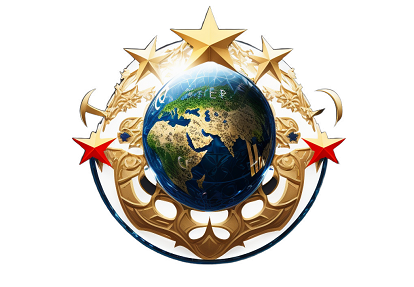The Northern Lights, also known as Aurora Borealis, are one of the most awe-inspiring natural phenomena on Earth. They are spectacular light show that occurs in the night sky in regions close to the Earth's magnetic poles. The Northern Lights have been a source of fascination and wonder for people all over the world for centuries. In this article, we will explore the science behind the Northern Lights, their history, cultural significance, and some of the best places to see them.
What are the Northern Lights?
The Northern Lights are a natural light display caused by the interaction of electrically charged particles from the sun with the Earth's magnetic field and atmosphere. The sun constantly releases charged particles in the form of solar wind, which travels toward Earth at high speeds. When the charged particles collide with the Earth's magnetic field, they are deflected towards the polar regions, where they interact with the gas molecules in the Earth's upper atmosphere.
As these charged particles collide with the gas molecules in the Earth's atmosphere, they transfer energy to the gas molecules, which then release the energy in the form of light. This creates beautiful and colorful aurora borealis, which can range in color from green and yellow to red and purple.
The colors of the Northern Lights can vary depending on the altitude of the gas molecules that the charged particles collide with. Oxygen molecules at a higher altitude emit a greenish-yellow light, while those at lower altitudes emit a red light. Nitrogen molecules emit blue or purplish-red light.
The History of the Northern Lights
The Northern Lights have been a source of wonder and fascination for people all over the world for centuries. Different cultures have interpreted the Northern Lights in different ways. In Norse mythology, the aurora borealis was thought to be the light reflecting off the shields of the Valkyries, the mythical female warriors who carried the souls of fallen soldiers to Valhalla.
In other cultures, the Northern Lights were seen as a bad omen or a sign of impending disaster. In some Native American cultures, the Northern Lights were thought to be the spirits of their ancestors dancing in the sky.
In the 17th century, scientists began to study the Northern Lights more closely. The Italian astronomer Galileo Galilei was one of the first to describe the aurora borealis in scientific terms, and the French astronomer Pierre Gassendi suggested that the lights might be caused by interactions between the sun and the Earth's magnetic field.
Cultural Significance
The Northern Lights have played an important role in the culture and folklore of many indigenous peoples. In Alaska, the Inupiaq people believed that the Northern Lights were the spirits of their ancestors. They believed that the spirits were dancing in the sky to celebrate the changing seasons.
In Finland, the Northern Lights were believed to be caused by a mythical firefox named Revontulet. The firefox ran so fast that its tail caused sparks to fly into the sky, creating the Northern Lights.
Best Places to See the Northern Lights
If you want to see the Northern Lights for yourself, there are several places in the world that offer great viewing opportunities. The best time to see the Northern Lights is during the winter months, when the nights are longer and darker. Here are some of the best places to see the Northern Lights:
Norway - Norway is one of the most popular places to see the Northern Lights. Tromsø, a city in Northern Norway, is known as the "Gateway to the Arctic" and is a great place to see the Northern Lights.
Iceland - Iceland is another great place to see the Northern Lights. The country has many remote areas that offer excellent viewing opportunities.
Sweden - Sweden is home to the famous Icehotel in Jukkasjärvi, which offers guests the chance to see the Northern Lights while staying in a hotel made entirely of ice.
Canada - The northern regions of Canada offer some of the best viewing opportunities for the Northern Lights. Yellowknife in the Northwest Territories is a popular destination for Northern Lights viewing.
Alaska - Alaska is another popular destination for Northern Lights viewing. The town of Fairbanks offers excellent viewing opportunities due to its location under the auroral oval.
Finland - Finland is home to several Northern Lights festivals and offers great viewing opportunities, especially in the Lapland region.
Tips for Viewing the Northern Lights
To maximize your chances of seeing the Northern Lights, it's important to plan ahead and prepare. Here are some tips for viewing the Northern Lights:
-Choose a location with clear skies and little light pollution.
-Dress warmly and bring plenty of layers, as temperatures can drop significantly at night.
-Bring a tripod and a camera with a high ISO setting to capture clear photos of the aurora borealis.
-Check the forecast for aurora activity to increase your chances of seeing the Northern Lights.
The Northern Lights are a truly magical natural phenomenon that have captured the imagination of people all over the world for centuries. From their scientific explanation to their cultural significance and viewing opportunities, there is so much to learn and appreciate about the Northern Lights. If you have the opportunity to see them in person, take advantage of it and experience the wonder and beauty of this natural light show for yourself.




